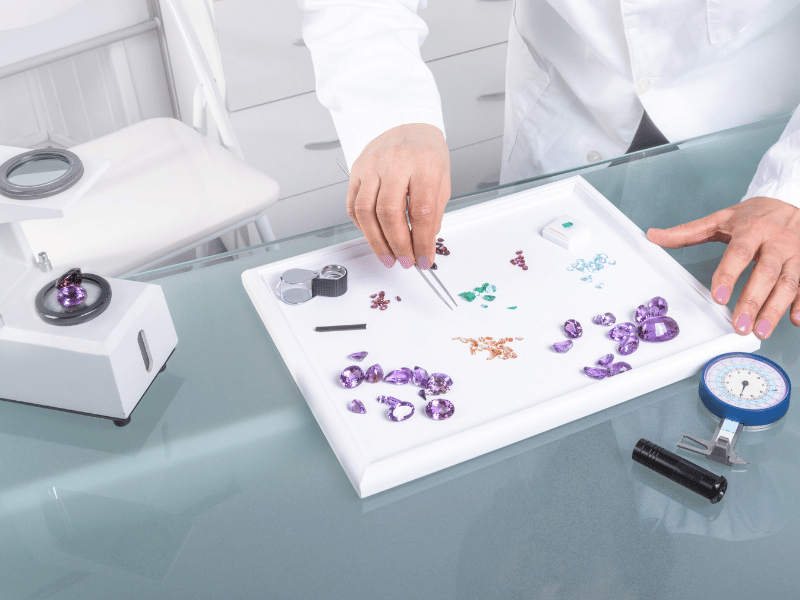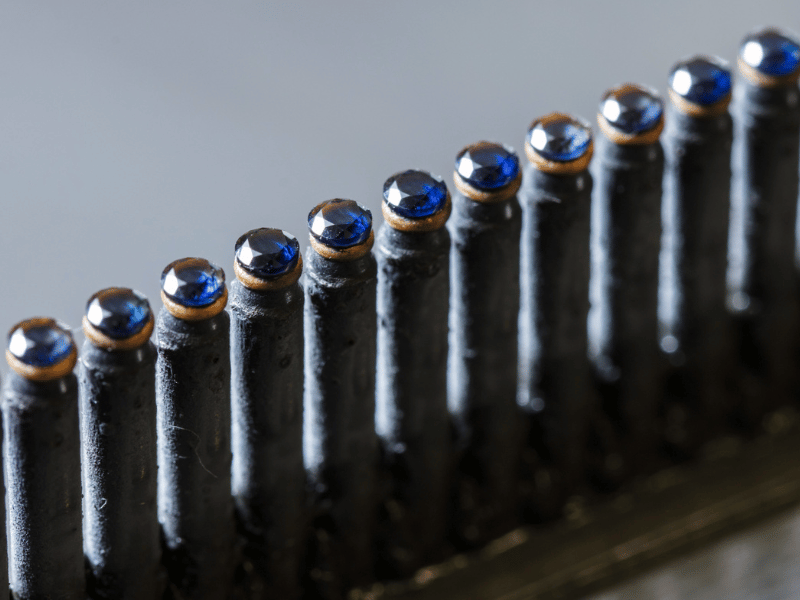At the core of the lapidary industry is and has always been the quest for radiance and beauty. Materials used and cutting techniques have evolved over the centuries to meet the growing expectations of jewel enthusiasts.
In the 1990s, one cut appeared that was truly groundbreaking and brought about a revolution in the way gemstones are cut: the “round brilliant” cut. Further to this invention, other new cuts have been created, among which the “100 facets”.
We are proposing in this article, to explore the history of this search for the most brilliant cut, and to discover the advantages and utilizations of the 100-facet cut.
Are you ready to immerse yourself in a sparkling world?

History of the “100 Facets” Cut
Invention of the round brilliant-cut

The history of the 100-facet cut must be viewed in the broader context of improving the cutting fashion of precious stones over the eras.
Developing new cuts was primarily aiming at enhancing the visual qualities of stones, in particular their brilliance and refraction.
The creation of the Peruzzi Cut by Vicenzo Peruzzi in the early 17th century sets a milestone in this process.
This cut featured 57 facets and then allowed to significantly enhance the brilliance and refraction of light compares to former cuts.
The quest for the most brilliant cut
The 100-facet cut occurs from this effort for innovation in the field of lapidary. Resting on the popularity of the modern brilliant, some new, even more spectacular cuts have been created.
Hearts and Arrows
Among the most impressive ones comes first the “Hearts and Arrows”, which was created in the 1980s by Brian Gavin, a South-African lapidary.
This cut is characterized by a perfect symmetry in facets, which form heart-shape and arrow-shape patterns when watching the stone under a special reflector.
The 100 Facets cut
Speaking about spectacular cuts, this was more recently in 2010, when Yair Shimansky developed the Brilliant 10 diamond, an innovative cut that features 71 facets and offers truly exceptional sparkle and scintillation.
As far the “100 Facets” is concerned, we do not really know its exact date of creation, but its design makes it one of the most brilliant cuts ever.
The Round Brilliant
Since it was created, the Round Brilliant has been evolving constantly. In that respect, the 100-facet cut is one of its heirs, like other mentioned examples, it stems from extensive research and experimentation.
We can thus perceive through these inventions the sustained willingness of lapidaries to improve their technique and highlight the natural beauty of the gems they cut.
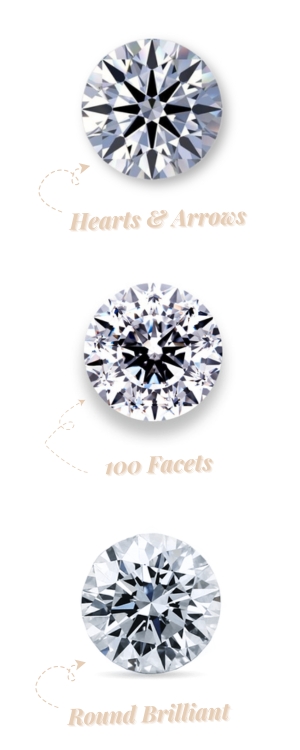
The Advantages of the “100 Facets” Cut
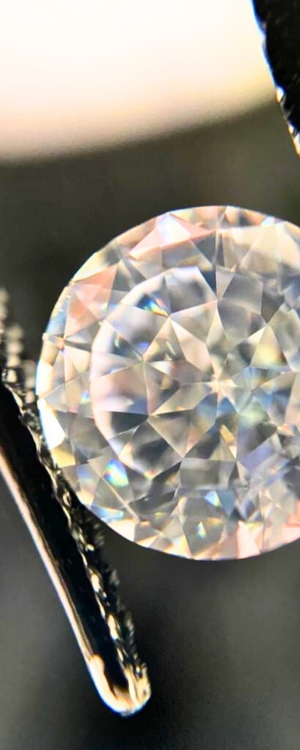
The “100 Facets” cut is one of the designs that better enhance the stones, whether they are precious or synthetic. This innovative cut offers exceptional brilliance and color dispersion. Let’s explore together its major advantages.
Enhanced brilliance
One of the major advantages of the “100 Facets” cut is the enhanced brilliance it provides to precious stones. Compares to traditional ones, this cutting technique allows adding numerous more facets, that let the light optimally reflecting and refracting through the stone. It results in a spectacular sparkle that immediately catches the eye and highlights the natural beauty of the gem.
It results in a spectacular sparkle that immediately catches the eye and highlights the natural beauty of the gem.
Color dispersion
Aside from brilliance, the “100 facets” cut also improves the dispersion of colors through precious stones. Thanks to its numerous facets, this cutting fashion lets the light divide into different shades, creating a profusion of colors that looks like a firework dancing inside the stone.
. This chromatic effect further enhances the beauty of jewels and adds a hint of elegance and sophistication.
Value added to precious stones
Eventually, one of the most interesting aspects of the “100 facets” cut is the added value it provides to precious stones.
Stones cut in this fashion are generally more valuable than stones cut in a more standard fashion, as they feature exceptional brilliance and sparkle.
Moreover, the complexity of the cut and the expertise required to master it, make it a high-end delivery, which further heightens the value and prestige of the jewels that display such stones.
Is the 100-facet cut suitable for all stones?
The optical properties of stones are critical to benefit from the advantages of displaying 100 facets. Materials used therefore need to have a high refraction index and a great transparence to maximize brilliance and color dispersion. Hardness and density of the material are also crucial to produce accurate facets that will keep sparkling over the years. Then what are the most suitable stones?
Diamonds
Due to their extraordinary optical properties and hardness, diamonds are obviously a top choice for “100 facets” cut. Transparence and light refraction in diamonds are optimal to highlight the advantages of this cutting fashion. Furthermore, the hardness of diamond allows producing accurate and long-lasting facets that can withstand wearing and will still show the same sparkle over time.
Jewels set with diamonds cut in “100 facets”, praised for their brilliance and modernity, are generally chosen for special occasions, among which are engagement rings, notably.
It is however important to emphasize that this cut is also fitted to other precious stones that are sapphires, rubies, and emeralds.
Lab-grown rough materials
Among created rough materials cubic zirconia (CZ) and moissanite appear to be the most appropriate for “100 facets” cut. CZ especially is a material which properties are ideal for this cut, with a refraction index of 2.16 (refraction index of diamond is 2.42) and a high density.
Incidentally, the advantage of using a synthetic stone is that it will be evener than a natural stone and flawless compares to the latter. It makes it even easier to get perfect facets and thus optimize brilliance and color dispersion.
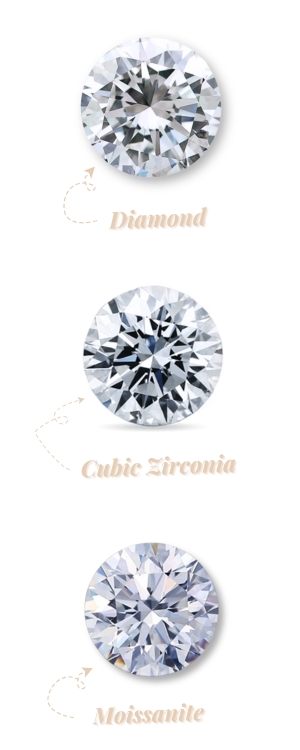
The “100 facets” cut is thus offering many advantages, among which enhanced brilliance, extraordinary color dispersion, as well as overall contemporary aesthetics.
It does not cease seducing jewelry amateurs and professionals, for it has the capacity to magnify the beauty of precious or synthetic stones, and allows creating unique and stunning pieces of jewelry. Ultimately, the “100 facets” cut is the expression of progress and evolution in the arts of jewelry and lapidary, and its legacy will continue radiating for generations to come.

